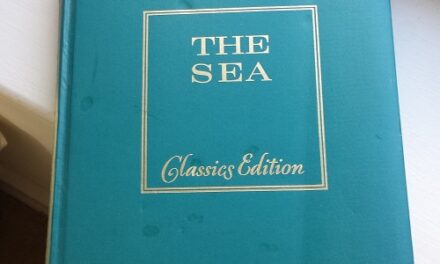 One of the million cool things about making a magazine is putting various works in conversation with each other. No poem is an island, after all. Or, if a poem is an island, then CR, and poetry in general, really, is an archipelago. And like the flora and fauna that travel from one discrete landmass to its neighbor, common images, melodies, and themes—obvious or otherwise—are bound to arise across any selection of work. Language is funny that way: It travels. It haunts. It is shared and borrowed and adapted and revered.
One of the million cool things about making a magazine is putting various works in conversation with each other. No poem is an island, after all. Or, if a poem is an island, then CR, and poetry in general, really, is an archipelago. And like the flora and fauna that travel from one discrete landmass to its neighbor, common images, melodies, and themes—obvious or otherwise—are bound to arise across any selection of work. Language is funny that way: It travels. It haunts. It is shared and borrowed and adapted and revered.
The poets below are quick to recognize their affinity for a certain mode or line that has inspired them. Hadara Bar-Nadav “enthusiastically join[s] a tradition of writers who have written about objects,” such as Pablo Neruda and Gertrude Stein. Julie Hanson gets permission from Sappho to “give up the struggle against” writing nature poetry. And Jacob Sunderlin pirates Moby-Dick for a way of venerating his buddy, “enthusiastic wearer of flannels,” Grosso.
Hadara Bar-Nadav on “Door,” “Motel,” and “Spine”: I am currently at work on a poetry manuscript that explores the inner lives of objects (both plastic and bodily). This poetry-based exploration of objects in turn reveals the inner lives of humans who depend on, assign meaning to, and fetishize these objects: a wineglass, motel, and thumb. We fill our days with such matter, such clutter. Objects can seem to disappear inside of their particular (and often very necessary) function. Do we really think of the life of the bedroom door, what she has witnessed? Or the fountain with its sculpture of a boy standing naked in a city square? And what of the spine and its relentless support of our cumbersome and thankless heads?
I enthusiastically join a tradition of writers who have written about objects, and I accept them as companions and sources of collaboration, including Francis Ponge, Gertrude Stein, and Pablo Neruda. Like these writers, my poetic investigation of objects through a unique contemporary lens brings to light the visceral and playful potential of our own lives.
Julie Hanson: I can account for the trigger for “It is unconquerable; it has” with surety. I was directed to the subject matter through the words “a vine that grows up trees” (which is, in its entirety, fragment 173 in Anne Carson’s translation of fragments of Sappho, If Not, Winter). Because I know such a vine, and know it well, it might have occurred to me as poetic material much earlier in my life. It didn’t. I suspect that it occurred to me as poetic material at the point of giving in, giving up the struggle against it, at the point, in other words, of my surrender. I suspect, too, that it was in the writing that I was first able to take part in the fun the vine has had with me; before that it was just effort and exasperation and fruitless struggle—which to some extent, of course, remains the case. Nature is bigger than I am. She is the vine, persistent, victorious, and, in this case, creepy!
Jacob Sunderlin on “Grosso”: I used to read Moby-Dick (also written about coincidentally and beautifully in this issue of Cincinnati Review) after getting home from a night job I once had stuffing ads into newspapers, and this passage directly inspired the content and style of the poem: “In old Norse times, the thrones of the sea-loving Danish kings were fabricated, saith tradition, of the tusks of the narwhale. How could one look at Ahab then, seated on that tripod of bones, without bethinking him of the royalty it symbolized? For a Khan of the plank, and a king of the sea, and a great lord of Leviathans was Ahab.” Where I’m from in Indiana, my friends do things like work in magnet factories and lay brick and do HVAC and start bands called Wabash Trash and they are my royalty. I’ve written several poems about one of them, Grosso—an Ahab in The Pequod called Wednesday—who is introduced here.










